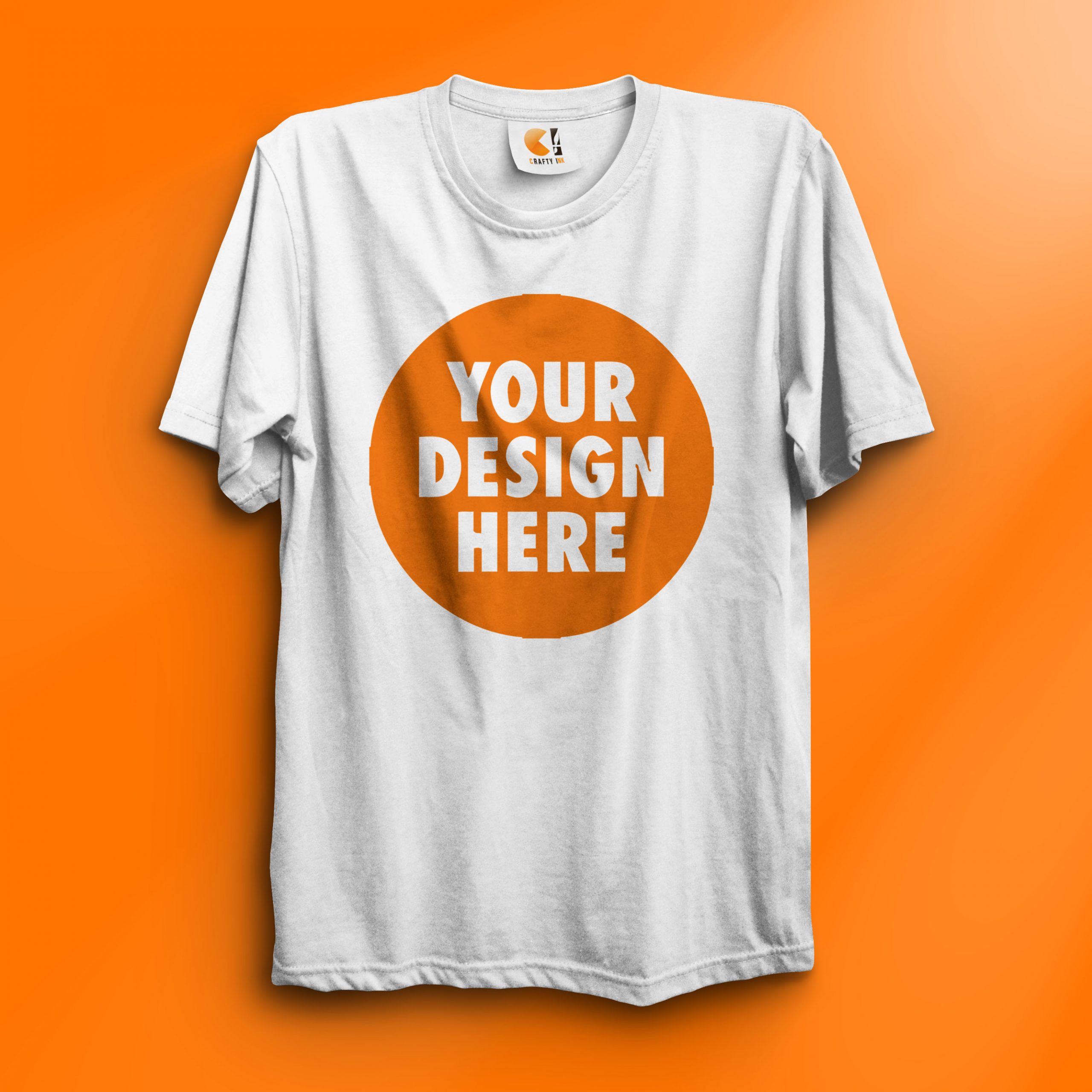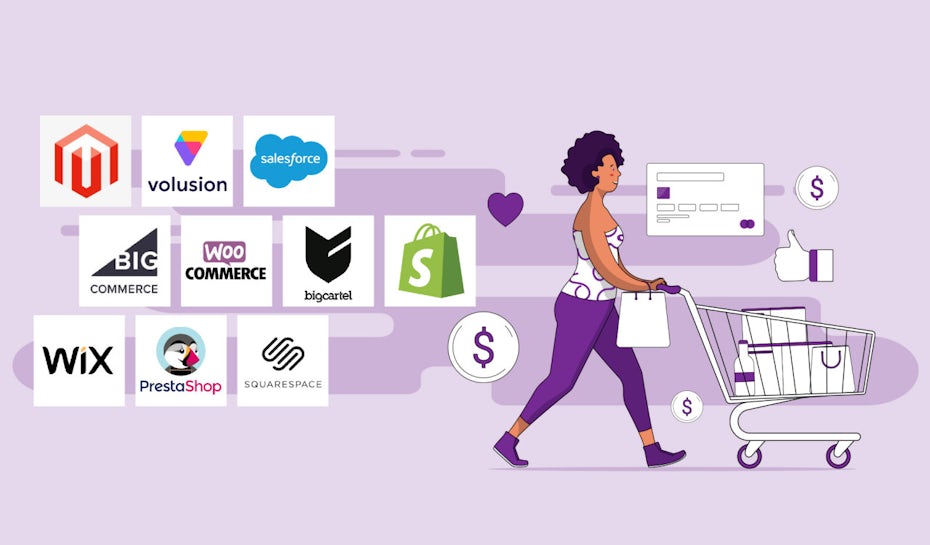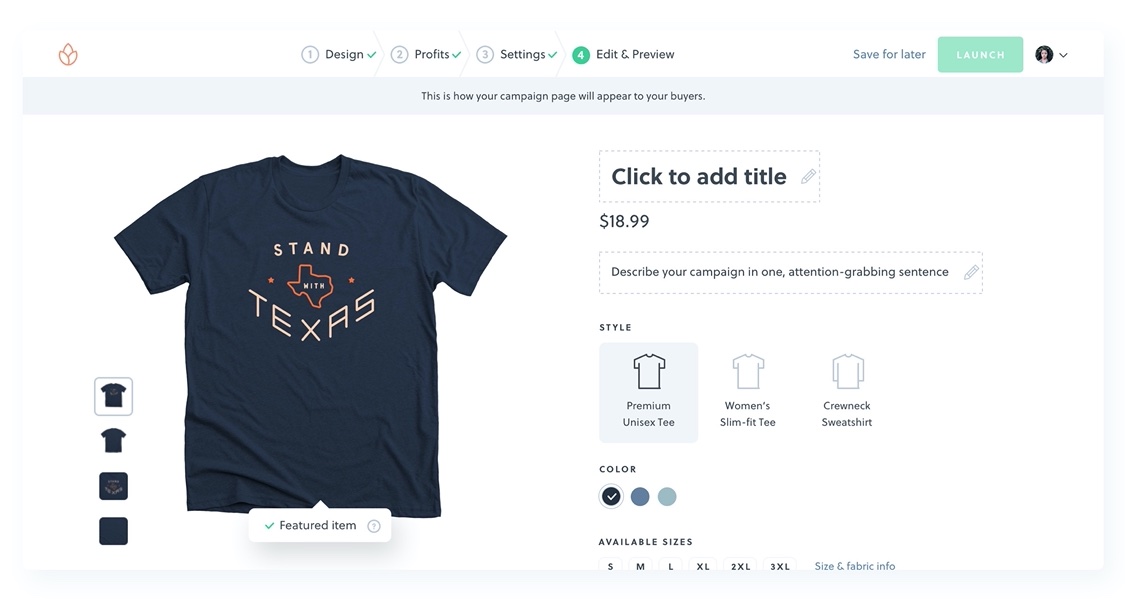Unlocking the Potential of Print-on-Demand Services
Print-on-demand services have revolutionized the way designers can create and sell custom t-shirts online. With the rise of e-commerce and digital printing technology, it’s now possible to produce high-quality, custom apparel without holding inventory. This approach has numerous benefits for designers who want to monetize their creativity without the upfront costs and risks associated with traditional screen printing methods.
Print-on-demand services allow designers to upload their designs to a platform, which then produces and ships the products directly to customers. This model eliminates the need for inventory storage, upfront printing costs, and shipping hassles. Designers can focus on creating new designs, marketing their products, and building their brand, while the print-on-demand service handles the production and fulfillment.
One of the key advantages of print-on-demand services is their ability to produce small batches or even single units of custom apparel. This makes it possible for designers to test new designs, target niche markets, or create limited-edition products without breaking the bank. Additionally, print-on-demand services often offer a wide range of products, including t-shirts, hoodies, mugs, and phone cases, allowing designers to expand their product lines and reach a broader audience.
When it comes to designing and selling t-shirts online, print-on-demand services offer a scalable and flexible solution. Designers can easily upload new designs, adjust pricing, and track sales in real-time. Many print-on-demand platforms also provide analytics and insights to help designers optimize their designs, marketing strategies, and product offerings for better sales performance.
By leveraging print-on-demand services, designers can turn their creative ideas into profitable products without the need for extensive resources or infrastructure. Whether you’re a seasoned designer or just starting out, print-on-demand services offer a convenient and cost-effective way to design and sell t-shirts online, making it an attractive option for those looking to monetize their creativity.
Designing for Success: Tips for Creating Best-Selling T-Shirt Designs
Creating a best-selling t-shirt design requires a combination of creativity, technical skills, and an understanding of your target market. When designing t-shirts to sell online, it’s essential to consider the latest trends, popular culture, and consumer preferences. By incorporating these elements into your design, you can increase the appeal of your t-shirts and attract a wider audience.
One of the most critical factors in creating a successful t-shirt design is understanding your target market. Who are your customers? What are their interests, hobbies, and passions? By understanding your target market, you can create designs that resonate with them and meet their needs. For example, if your target market is music lovers, you could create designs that feature popular artists, music festivals, or iconic music symbols.
High-quality graphics are also essential for creating best-selling t-shirt designs. Invest in a good graphics editor, such as Adobe Illustrator or Photoshop, and learn the basics of graphic design. Use high-resolution images, bold colors, and creative typography to make your designs stand out. Avoid using low-quality images or overly complex designs that may not print well.
Simple yet effective designs are often the most successful. Avoid cluttering your design with too many elements or using overly complex graphics. Instead, focus on creating a clean, simple design that communicates a clear message or idea. Use negative space effectively, and balance text and images to create a visually appealing design.
When designing t-shirts to sell online, it’s also essential to consider the technical aspects of print-on-demand production. Ensure that your designs are optimized for print-on-demand services, with a resolution of at least 300 DPI and a color mode of CMYK. Use a design template or mockup to visualize how your design will look on different products and adjust your design accordingly.
By following these tips and creating high-quality, appealing designs, you can increase your chances of success when designing and selling t-shirts online. Remember to stay up-to-date with the latest trends and consumer preferences, and continually adapt and improve your designs to meet the changing needs of your target market.
How to Choose the Right E-commerce Platform for Your T-Shirt Business
When it comes to selling t-shirts online, choosing the right e-commerce platform is crucial for success. With so many options available, it can be overwhelming to decide which platform is best for your business. In this article, we’ll compare and contrast three popular e-commerce platforms – Shopify, WooCommerce, and BigCommerce – to help you make an informed decision.
Shopify is one of the most popular e-commerce platforms, known for its ease of use and scalability. It offers a wide range of customizable templates, a user-friendly interface, and a vast app store with integrations with popular services like print-on-demand providers. Shopify also offers a built-in payment gateway, making it easy to accept payments from customers.
WooCommerce, on the other hand, is a popular e-commerce plugin for WordPress. It offers a high degree of customization and flexibility, making it a great option for businesses with unique needs. WooCommerce also has a large community of developers and users, which means there are many resources available for troubleshooting and customization.
BigCommerce is another popular e-commerce platform that offers a range of features and tools to help businesses succeed. It offers a user-friendly interface, customizable templates, and a built-in payment gateway. BigCommerce also offers a range of integrations with popular services like print-on-demand providers and social media platforms.
When choosing an e-commerce platform for your t-shirt business, there are several factors to consider. First, think about your business needs and goals. Do you need a platform that can handle a high volume of sales, or are you just starting out and need a more basic solution? Consider the features and tools offered by each platform, as well as the level of customization and flexibility you need.
Another important factor to consider is the cost of each platform. Shopify and BigCommerce offer a range of pricing plans, from basic to advanced, while WooCommerce is a free plugin that requires a WordPress installation. Consider the cost of each platform, as well as any additional fees for payment gateways, shipping, and other services.
Finally, think about the level of support and resources offered by each platform. Shopify and BigCommerce offer 24/7 support, while WooCommerce has a large community of developers and users who can provide support and resources. Consider the level of support you need, as well as the resources available to help you succeed.
Setting Up an Online Store: A Step-by-Step Guide
Setting up an online store is an exciting step in selling t-shirts online. With the right platform and design, you can create a professional-looking store that attracts customers and drives sales. In this article, we’ll walk you through the process of setting up an online store, including choosing a domain name, selecting a theme, and customizing your store’s design.
Step 1: Choose a Domain Name
Your domain name is the web address that customers will use to access your online store. It’s essential to choose a domain name that is easy to remember, relevant to your brand, and available. You can check the availability of your desired domain name using online tools such as GoDaddy or Namecheap.
Step 2: Select a Theme
Once you’ve chosen your domain name, it’s time to select a theme for your online store. Your theme should reflect your brand’s personality and style, and be easy to navigate for customers. Most e-commerce platforms offer a range of free and paid themes to choose from, so take your time and select a theme that works best for your business.
Step 3: Customize Your Store’s Design
After selecting a theme, it’s time to customize your store’s design. This includes adding your logo, changing colors and fonts, and adding images and text. Most e-commerce platforms offer a range of customization options, so take your time and make sure your store looks professional and reflects your brand.
Step 4: Add Products
Once your store is set up, it’s time to add products. This includes creating product pages, adding images and descriptions, and setting prices. Make sure your product pages are optimized for conversions, with clear calls-to-action and easy-to-use checkout processes.
Step 5: Optimize for Conversions
Finally, it’s essential to optimize your online store for conversions. This includes optimizing product pages, improving navigation, and streamlining the checkout process. By optimizing your store for conversions, you can increase sales and drive revenue for your business.
By following these steps, you can set up a professional-looking online store that attracts customers and drives sales. Remember to keep your store’s design consistent with your brand, and optimize for conversions to maximize sales.
Marketing Strategies for Selling T-Shirts Online
Marketing is a crucial aspect of selling t-shirts online. With so many designers competing for attention, it’s essential to have a solid marketing strategy in place to stand out from the crowd. In this article, we’ll discuss various marketing strategies for selling t-shirts online, including social media marketing, influencer marketing, and paid advertising.
Social Media Marketing
Social media is a powerful marketing tool for designers who want to sell t-shirts online. Platforms like Instagram, Facebook, and Twitter offer a vast audience and a range of features to help designers showcase their designs and connect with potential customers. By creating engaging content, using relevant hashtags, and running targeted ads, designers can increase their online presence and drive sales.
Influencer Marketing
Influencer marketing is another effective way to promote t-shirt designs online. By partnering with influencers who have a large following in your target market, you can showcase your designs to a wider audience and build credibility for your brand. Look for influencers who align with your brand values and have a track record of promoting products in your niche.
Paid Advertising
Paid advertising is a great way to reach a wider audience and drive sales for your t-shirt business. Platforms like Google Ads and Facebook Ads offer a range of targeting options, including demographics, interests, and behaviors, to help you reach your target market. By creating effective ad copy and targeting your ads to the right audience, you can increase your online visibility and drive sales.
Email Marketing
Email marketing is a powerful tool for designers who want to sell t-shirts online. By building an email list and sending regular newsletters to your subscribers, you can showcase your designs, promote new products, and offer exclusive discounts to your loyal customers. Use email marketing automation tools to personalize your emails and improve your open rates.
Content Marketing
Content marketing is a great way to attract and engage with your target audience. By creating high-quality content, such as blog posts, videos, and podcasts, you can showcase your expertise and build trust with your audience. Use content marketing to promote your t-shirt designs and drive sales for your business.
By incorporating these marketing strategies into your online business, you can increase your online visibility, drive sales, and build a loyal customer base. Remember to track your results and adjust your marketing strategies accordingly to ensure the best possible outcome for your t-shirt business.
Optimizing Your Designs for Search Engines
Search engine optimization (SEO) is a crucial aspect of selling t-shirts online. By optimizing your designs for search engines, you can increase your online visibility, drive more traffic to your website, and ultimately, boost your sales. In this article, we’ll discuss the importance of SEO for designers who want to sell t-shirts online and provide tips on how to optimize your designs for better visibility in search engine results.
Why is SEO Important for T-Shirt Designers?
SEO is essential for t-shirt designers because it helps your designs appear in search engine results when customers search for keywords related to your products. By optimizing your designs for search engines, you can increase your online visibility, drive more traffic to your website, and ultimately, boost your sales.
How to Optimize Your Designs for Search Engines
Optimizing your designs for search engines involves several steps, including:
Keyword Research
Conducting keyword research is the first step in optimizing your designs for search engines. Use tools like Google Keyword Planner or Ahrefs to find relevant keywords related to your products. Identify long-tail keywords that have lower competition and higher search volume.
Optimize Your Design Titles
Optimize your design titles by including your target keywords. Use a descriptive title that accurately reflects the content of your design. Keep your title concise and under 60 characters.
Optimize Your Design Descriptions
Optimize your design descriptions by including your target keywords. Use a descriptive description that accurately reflects the content of your design. Keep your description concise and under 160 characters.
Optimize Your Design Tags
Optimize your design tags by including your target keywords. Use relevant tags that accurately reflect the content of your design. Keep your tags concise and under 10 tags per design.
Image Optimization
Optimize your images by including your target keywords in the file name and alt tag. Use high-quality images that are relevant to your design. Compress your images to reduce file size and improve page load times.
By following these tips, you can optimize your designs for search engines and increase your online visibility. Remember to track your results and adjust your SEO strategies accordingly to ensure the best possible outcome for your t-shirt business.
Managing Orders and Fulfillment: A Guide to Print-on-Demand Services
Managing orders and fulfillment is a crucial aspect of selling t-shirts online using print-on-demand services. By understanding how to track orders, handle customer service, and ensure timely shipping, you can provide a seamless experience for your customers and build a successful t-shirt business.
Tracking Orders
When using print-on-demand services, it’s essential to track orders to ensure that they are fulfilled correctly and on time. Most print-on-demand services provide a dashboard or interface where you can track orders, view order status, and receive notifications when orders are shipped.
Handling Customer Service
Providing excellent customer service is critical to building a successful t-shirt business. When using print-on-demand services, you’ll need to handle customer inquiries, respond to customer complaints, and resolve any issues that may arise. Make sure to respond promptly to customer inquiries and provide helpful and courteous service.
Ensuring Timely Shipping
Ensuring timely shipping is essential to providing a seamless experience for your customers. Most print-on-demand services offer a range of shipping options, including expedited shipping and international shipping. Make sure to communicate shipping times and costs clearly to your customers and provide tracking information to ensure that they can track their orders.
Print-on-Demand Service Providers
There are several print-on-demand service providers that you can use to manage orders and fulfillment. Some popular options include Printful, Teespring, and Redbubble. Each provider has its own strengths and weaknesses, so make sure to research and compare providers to find the best fit for your business.
Automating Order Fulfillment
Automating order fulfillment can help streamline your business and reduce the risk of errors. Many print-on-demand service providers offer automation tools that allow you to automate order fulfillment, including order tracking and shipping notifications. Make sure to explore these tools and use them to optimize your order fulfillment process.
By following these tips and best practices, you can manage orders and fulfillment effectively and provide a seamless experience for your customers. Remember to stay organized, communicate clearly, and provide excellent customer service to build a successful t-shirt business.
Scaling Your T-Shirt Business for Long-Term Success
Scaling a t-shirt business requires careful planning, execution, and ongoing optimization. To achieve long-term success, it’s essential to monitor analytics, adjust marketing strategies, and expand product lines to stay competitive. In this article, we’ll provide tips and strategies for scaling a t-shirt business and discuss the importance of ongoing optimization.
Monitoring Analytics
Monitoring analytics is crucial to understanding your business’s performance and identifying areas for improvement. Use tools like Google Analytics to track website traffic, sales, and customer behavior. Analyze your data to identify trends, patterns, and insights that can inform your marketing strategies and product development.
Adjusting Marketing Strategies
Adjusting marketing strategies is essential to staying competitive in the t-shirt market. Continuously monitor your marketing campaigns and adjust your strategies based on performance data. Experiment with new marketing channels, tactics, and messaging to stay ahead of the competition.
Expanding Product Lines
Expanding product lines is a great way to stay competitive and attract new customers. Consider adding new product lines, such as hoodies, hats, or accessories, to your existing product offerings. Use customer feedback and market research to inform your product development and ensure that your new products meet customer needs and preferences.
Optimizing Product Pages
Optimizing product pages is essential to converting website visitors into customers. Use high-quality product images, detailed product descriptions, and clear calls-to-action to create effective product pages. Ensure that your product pages are mobile-friendly and easy to navigate to provide a seamless user experience.
Building an Email List
Building an email list is a great way to stay in touch with customers and promote new products and promotions. Use email marketing campaigns to nurture customer relationships, promote new products, and offer exclusive discounts and promotions.
By following these tips and strategies, you can scale your t-shirt business for long-term success. Remember to continuously monitor analytics, adjust marketing strategies, and expand product lines to stay competitive. With ongoing optimization and a focus on customer needs and preferences, you can build a successful and sustainable t-shirt business.







